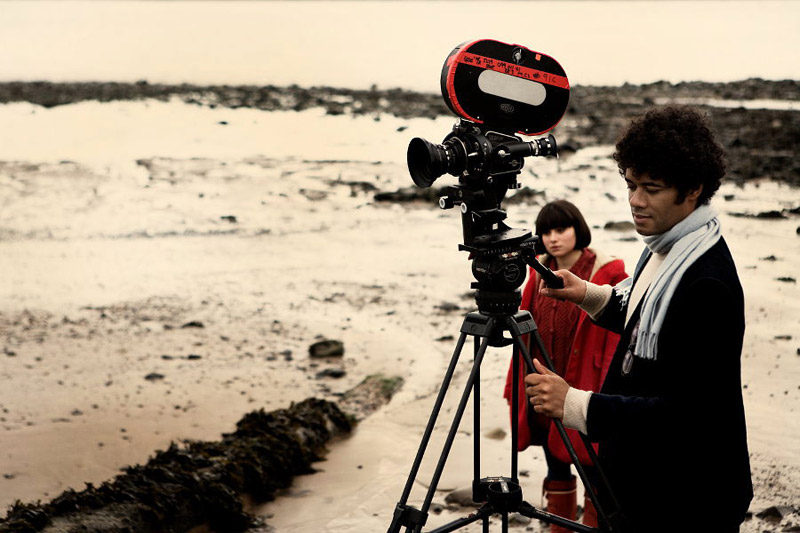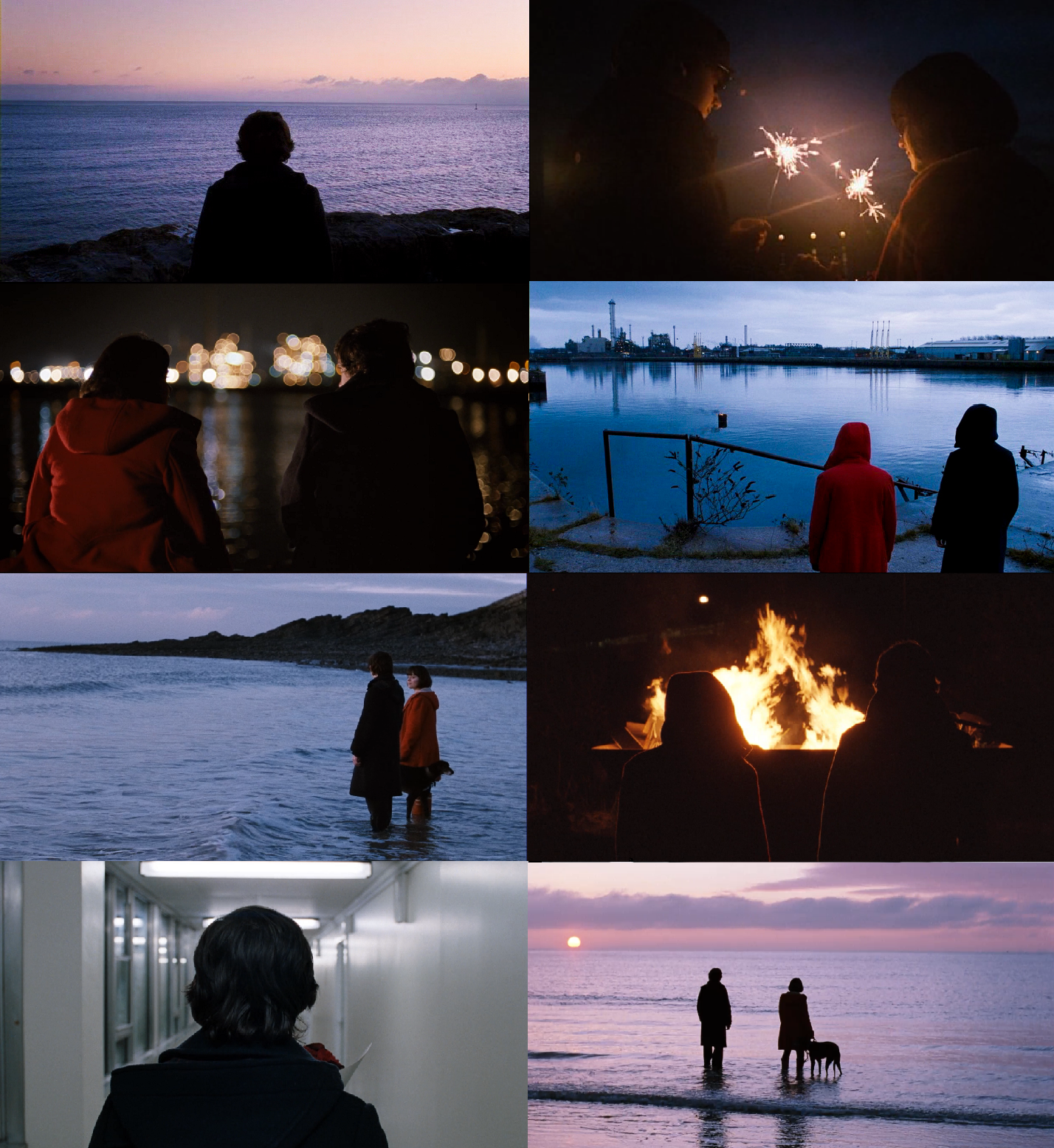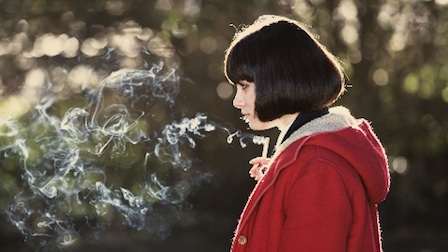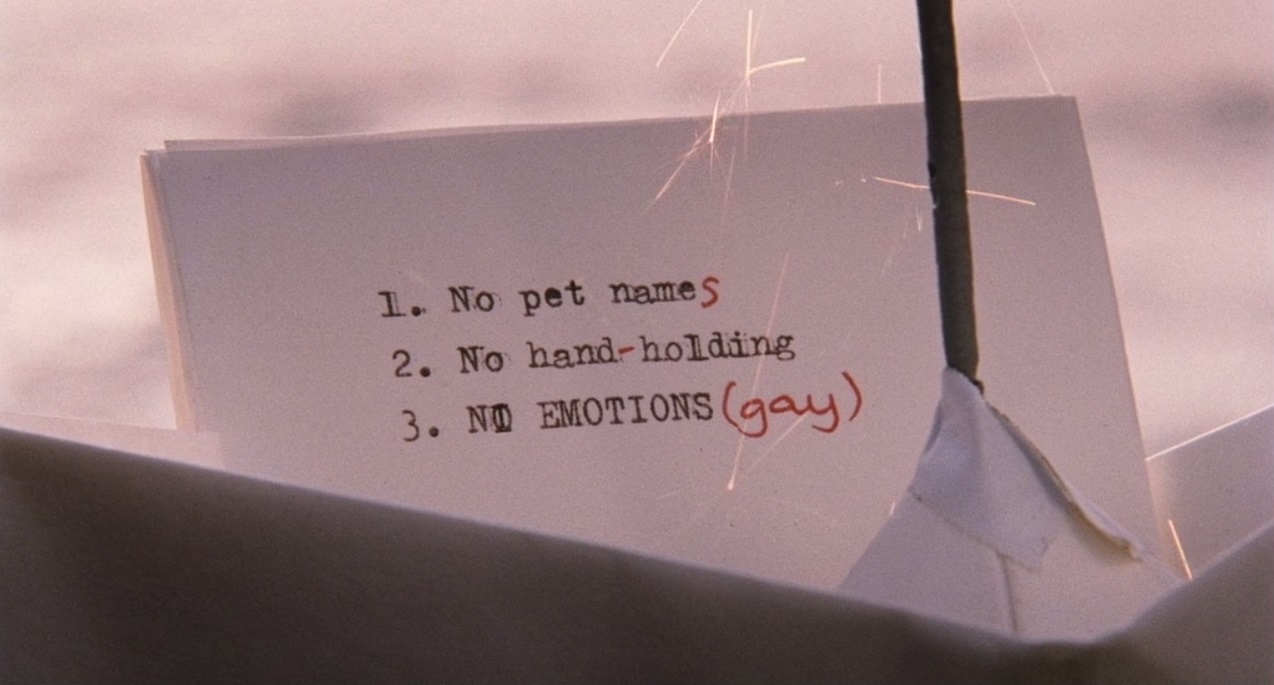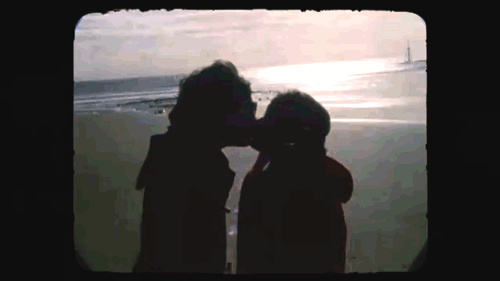In preparation for a humanities course next semester (Japan: Studies in Civilization and Culture), I have spent the last couple of weeks watching some major
Studio Ghibli films, namely ones written and/or directed by
Hayao Miyazaki. I have not had much experience with anime, though as a child I did see such works as
Castle in the Sky,
Kiki's Delivery Service, the ever-bizarre
Spirited Away, and the mightily depressing
Grave of the Fireflies. The only anime television shows in my personal viewing history include a handful of the original
Pokémon episodes, Books 1-3 of
Avatar: the Last Airbender, and Books 1-2 of
The Legend of Korra—all of which are pretty Americanized. My manga bookshelves are also sparse, counting just Tokyopop's
Bizenghast and
The Tarot Café (the latter of which is actually a Korean manhwa). So yes, you could say that I am fairly new to the genre. After seeing twelve of Miyazaki's pictures, though, I am definitely open to seeing and reading more.
Often called "The Disney of the East," Studio Ghibli has put out no less than twenty feature films since '84, with some stories based off of popular mangas. Those that I chose to view were all written and directed by Miyazaki himself with the exceptions of
Whisper of the Heart,
The Secret World of Arrietty and
From Up on Poppy Hill, all three of which he produced rather than directed. Please note that I saw only the English-dubbed versions of these films. Normally I would do subtitles, but I thought it would be interesting to hear the voice acting talents of celebrities I am already somewhat familiar with. Also, for the sake of my sanity, I have not included Japanese titles. If you are interested, they are available on each film's IMDB page.
Nausicaä of the Valley of the Wind (1984)
It has been one hundred years since the collapse of industrialized civilization. Much of the world is covered by a toxic jungle full of deadly pollen that happens to look a lot like nuclear fallout, as well as giant trilobite-like creatures called the Ohmu. The last of the human race faces extinction.
What I liked most about this film was—go figure—the strong female lead. Nausicaä is the princess of the Valley of the Wind and shares a special connection with her people, nature, and even the Ohmu. She is often the one who tries to dissuade others from acts of violence and eventually fulfills the prophecy of 'the man in blue who walks through golden fields' who will restore tranquility to the world: basically Jesus. She acts to remind others of the importance of every human's connection to the earth. She is also crazy-skilled at riding air gliders and has a cute little fox-squirrel named Teto. D'aw. Hearing
Patrick Stewart voice Lord Yupa was also a treat.
A girl jumps from an airship to evade both her captors and air-pirates. She is prevented from falling to her death by a magical levitating amulet that hangs from around her neck. Turns out that she is Princess Sheeta (voiced by a very young
Anna Paquin), a descendant of the royal line of Laputa—a fabled castle in the sky that once ruled over the world with highly-advanced technology and 'Aetherium' crystals (like the amulet). She pairs up with a young boy named Pazu as they try to outrun dodgy men in bowler hats, the army, and pirate captain Dola.
The opening credits for this film are gorgeous, as is the detailed Steampunk-esque machinery in the form of automobiles, trains, airships and various other flying machines. At first everything is a bit reminiscent of
The Goonies, what with a group of laughable baddies chasing some kids through underground tunnels, but eventually the audience sees that Dola and her crew are a bunch of softies who end up helping Sheeta and Pazu. There are lots of 'splosions, robots, a Hitler-esque villain, the popular scenario of science v. nature, and the ever-present sky. I will say that, when the first robot falls, there were tears. Poor fella. As I have found with all but one Ghibli film, though, there is a happy ending. Fox-squirrels make a brief cameo, too. Damn, those things are cute.
 |
| Roooboooot nooooooooo...! :( |
Two young girls (voiced by the Fanning sisters) and their father move to the country so that they can be nearer a hospital that houses their ill mother. They soon make friends with the forest spirits surrounding their now domicile. This includes Totoro, who helps the girls through difficult times.
This one has gotten pretty popular in recent years, though I myself do not know why it has made such a large comeback. In addition to Totoro and his two chibis, there is also the caterpillar-legged Catbus and a bunch of soot sprites. I remembered these little 'dust gremlins' from my first viewing of Spirited Away, so in addition to the fox-squirrels it was cool to see some universal continuity. This is shown, too, through the use of air travel. While there was no mechanical transportation to this end, the girls do go on a nighttime flying adventure with Totoro. I couldn't help but think of Mary Poppins when he brought out his umbrella and began twirling through the air. Catbus also contributed by appearing as the wind in the eyes of adults; almost all Ghibli films incorporate some form of flying.
When a witch turns fifteen, it is tradition for her to leave home for one year to make her way in a new city. Kiki (
Kirsten Dunst) and her black cat familiar Jiji (the late
Phil Hartman) go straight to the coast, meeting a kind baker who agrees to take the broomstick-flying girl on as an assistant and deliverer. She befriends and eventually saves Tombo, a boy who loves all things aviation.
This was one of my favourite movies growing up. Unlike some other Ghibli films, it takes magic to be real—normal, even—from the very start. We get some more 'lighter than air travel', including a very unsafe dirigible, but the heart of this film focuses on creative blocks. When doing what you love becomes your job, it is easy to lose your passion for it. Everyone experiences this, even myself—writer's block, anyone? I have a feeling that this will always remain one of my favourite animated productions. I particularly like the end-credits montage. Similar to the one featured in
Nausicaä, being able to see a collection of short scenes featuring a follow-up to the events that took place in the film felt like a more complete ending.
Porco Rosso (1992)
In Italy, there exists a WWI fighter-pilot veteran cursed to look like a pig after he abandoned his friends during a bout of aerial combat. A known womanizer and pirate bounty hunter, Porco Rosso (
Michael Keaton) teams up with a plucky young mechanic named Fio against the Italian airforce, secret service, pirate gangsters, and Curtis (
Cary Elwes)—the American pilot vying for Gina and, latterly, Fio's love.
Odd as it sounds, this quickly became another one of my favourites. The story is more lighthearted than many of the others, and it did a good job emphasizing the more somber bits. The pig curse is seen by other characters as totally normal, and I think that dose of magic in a world otherwise seemingly untouched by it is a cool concept, drama-wise. Given the rest of the films, one can see that Miyazaki
really likes the idea of pirates and planes. We also get another glimpse of his anti-war sentiments...something for which he is currently under fire in Japan after the release of his latest film,
The Wind Rises. Anywho,
Porco Rosso also does a good job portraying women from that time period, and Fio's strong personality makes up for Gina's sometimes silly romantic longings.
 |
| Women working together to build a plane. |
Fourteen-year-old Shizuku attends junior high, writes song lyrics, and reads a lot of fiction. She discovers that all of the books she chooses from her school's library have all been checked out by the same boy, Seiji, whom she happens to find infuriating. Eventually they grow closer and he reveals his dream of becoming a violin maker. Shizuku herself feels aimless in life, but by deciding to write her own novel she earns a bit of purpose and self-respect.
While I did not enjoy this film nearly as much as the others, I could appreciate its view on proving oneself. The fact that Shizuku spends so much time in the library was a strong point of personal connection but, when her friends and family scold her for reading so often, I was a bit taken aback. The girls' studies do suffer when she begins work on her own book, but I hardly think
reading is something you should encourage a person
not to do. Then the whole idea of two fourteen-year-olds wanting to get married by the end of the film is just...
ugh. The entire story feels a tad directionless, but the subplots of the wandering cat Muta, Seiji's grandfather's antique shop, and the statuette of The Baron (again voiced by
Cary Elwes) was enough to keep me going. I believe The Baron has a more prominent role in 2002's
The Cat Returns, and I plan on viewing it sometime in the near future.
Princess Mononoke (1997)
After being afflicted by a demon curse, prince Ashitaka of the Emishi tribe tries to stop a war between the forest gods and a mining colony made up of reformed prostitutes now led by Lady Eboshi (
Minnie Driver). They fight against San—an orphaned princess raised by her wolf mother Moro (
Gillian Anderson) to hate all humans—in order to try and behead the Spirit of the Forest/Nightwalker. That doesn't go too well for anyone involved. The creature itself lives in a sacred marsh inside the forest: a hallowed, peaceful retreat eerily similar to the place beneath the quicksand in
Nausicaä.
In addition to his ill feelings toward war, Miyazaki also cares about the earth—a number of Ghibli films have an ecological side.
Mononoke features nature spirits like the Kodama alongside 'talking' animal gods. They are contrasted with the advancement of technology and a population of humans who do not see coexistence as an answer. The film also analyzes matriarchal society and challenges gender roles, the treatment of lepers, et cetera. Of all Ghibli productions, I would have to say that this one is pretty dark (especially the gory deaths), which just goes to show that anime's key demographic is not limited to just children or those in their early teens. [Unrelated fact:
Billy Bob Thornton voices Jigo. Once you know the actor behind the voice, you can never unhear them. It's terribly distracting.]
Spirited Away (2001)
Chihiro stumbles into the spirit world, knowing nothing about how they operate or what it will take to escape. The ten-year-old is aided by the oddly familiar Haku (voice-actor extraordinaire
Jason Marsden) as she finds work in Yubaba's bathhouse and overcomes her fear of the unknown.
First off, Chihiro's mum and dad possess the
worst parenting skills. 'Oh, what's this? A darkened road probably nobody ever goes down? Let's take it! Oh, look, an apparently abandoned festival ground that can only be reached by passing through a long, scary tunnel? Let's have a picnic there despite the fact that our daughter is pleading with us to go back! Oh my word, free food? Let us partake and get turned into pigs!' -_-
Anyway...there is in fact a reason this is one of Miyazaki's most-loved creations: it is flat-out brilliant. There are both literal and symbolic transformations, a fresh coming-of-age story, corruptions and cleansings, and so much more. When I first saw the movie, I was younger, much less experienced with all things anime, and I thought that it was one of the weirdest things I had ever seen. Upon a second encounter, it's not so weird as it is fascinating. Actually, No-Face remains one of my favourite mascots in the entire Ghibli-verse.
Howl's Moving Castle (2004)
Sophie works as a humble milliner before running across a witch who turns her into an old woman. 'Grandma' Sophie (the late
Jean Simmons) inadvertently seeks out help from a spoiled young wizard named Howl (
Christian Bale?!) and the captive fire demon Calcifer (
Billy Crystal) who keeps the castle running. Sophie and Howl fall in love, of course. There's even some time travel involved.
To answer the question burning you up inside, yes, Bale does use his infamous throat-cancer Batman voice at one point during this film. :P War and patriotism are two themes lingering on from Miyazaki's previous writings, with the added concept of standing up to fight for the things you hold dear. Elderly life features prominently in the storyline, too. Turnip-head now takes up a special place in my heart, as does the ever-exquisite animation and continued use of steam-power and airships.
 |
| Always ready to lend a hand, loyal ol' Turnip-head. |
Ponyo (2008)
Loosely based on the fable of
The Little Mermaid, a five-year-old boy named Sôsuke becomes friends with goldfish princess Ponyo. She longs to become human so that she can, er...eat ham? It's not really clear. Anyway, her sea-dwelling father Fujimoto (
Liam Neeson) and mother—the Goddess of Mercy (
Cate Blanchett)—work to keep nature in balance with the rest of the world when shit starts to get cray-cray due to their daughter's antics.
Betty White,
Matt Damon and
Tina Fey also lend their voices to various characters.
My least favourite of the bunch, one has to admit that
Ponyo's narrative is weak. The animation is fantastic as ever, don't get me wrong, but being annoyed with the lead's voice does no favors. For the majority of the film Ponyo acts like a Pokémon in that she simply repeats her name over and over again in an irritatingly shrill voice. Most everything goes unexplained, though it is easy enough to identify the theme of anti water pollution. However, I found that even when the story did make sense, it dragged. Can't win them all.
The Secret World of Arrietty (2010)
Arrietty lives with her father Pod (
Mark Strong) and mother Homily (
Olivia Coleman) beneath the floorboards of an English cottage. The rest of their kind has been almost entirely wiped out. When human Shô turns up to rest his weak heart before surgery, things start to fall apart for the adventurous girl and her four-inch family. Think
The Borrowers, only much less horrible because it is animated rather than live-action.
I cannot think of much to say about this film other than I liked it enough to recommend it to others. The story is sweet, if a little dull at times, but I feel that it made up for this by the amazing colouring job and study on perspective. This was also the film during which I took note of all the wayward/orphaned children featured in Ghibli films. It is always nice to be reminded of childhood by viewing things through their eyes, and having nearly all the protagonists be children because their parents are gone is a means to that end. [Whoops: Turns out I watched the 2011 UK version rather than the 2012 American release. Why have two adaptations in the same language?]
From Up on Poppy Hill (2011)
With her father lost at sea during the Korean War and her mother abroad in America with her studies, teenager Umi ends up running the family's boarding house. She gets involved in saving her school's clubhouse from destruction and falls in love with a boy who turns out
might be her long lost brother
buuut then actually isn't. Phew.
Miyazaki commentates on war yet again in one of his most recent works. This film is a lot more Japanese-flavored than some of the previous, i.e., the types of daily chores performed and food consumed, general architecture, county history. [Sidenote: I had previously noticed that Ghibli makes their buildings either very tribal or, toward the other end of the spectrum, European. Interesting, right? Possible exceptions are the family home in
My Neighbor Totoro and the bathhouse in
Spirited Away, both of which appear traditionally Asian.] This is kind of funny when you hear the French-jazz soundtrack playing in the background and see that the clubhouse is named the
Quartier Latin. It's the '60s, though, and things are changing in Japan. The students hide political debates from teachers, print somewhat radical newspapers, and openly mock the 1964 Olympics—a source of national pride for some. Bicycles and umbrellas are seen nearly everywhere, as is true for quite a few of the films listed above. I wonder at the significance those symbols hold for Miyazaki.
 |
| War and loss. |
Well, this has been one long masterpost, eh? I look forward to expanding my viewing history in this genre and plan on seeing
The Wind Rises when it comes out with an English dub...not to mention older works I skipped like
Only Yesterday,
Pom Poko,
Tales from Earthsea,
Ocean Waves, and others. Do you have a favourite Studio Ghibli film, anime movie, television show, or manga? A preferred
mascot? Let me know in the comments below.
Update 12/3/14: Ended up doing a few projects on the works of HM in class, including this
collaborative presentation on Princess Mononoke.
























